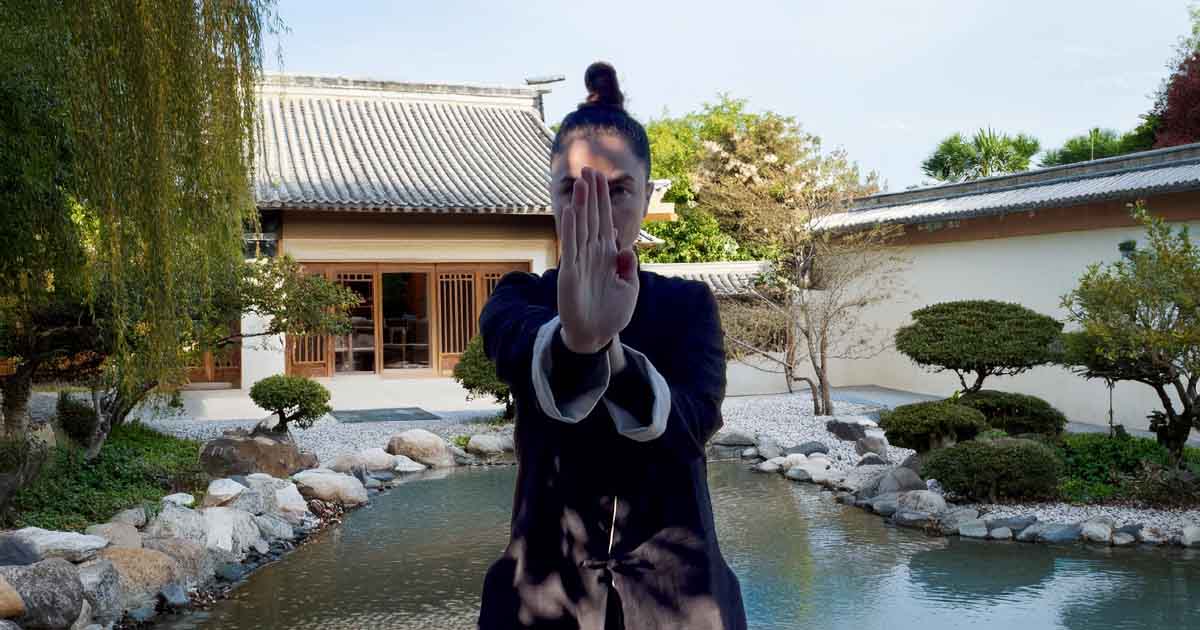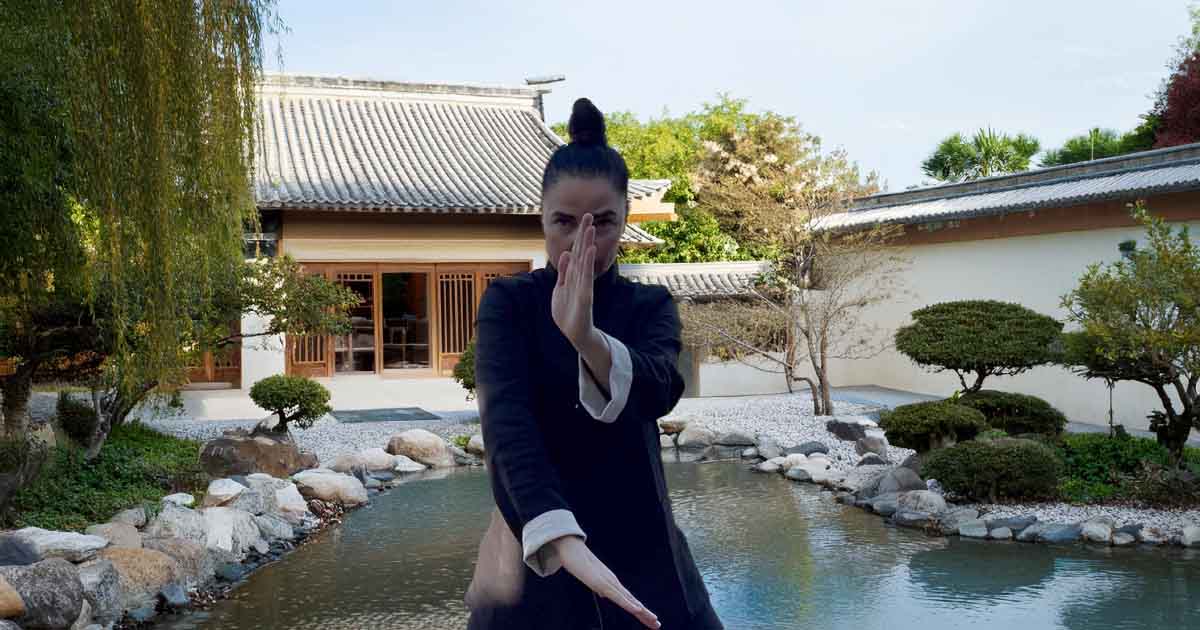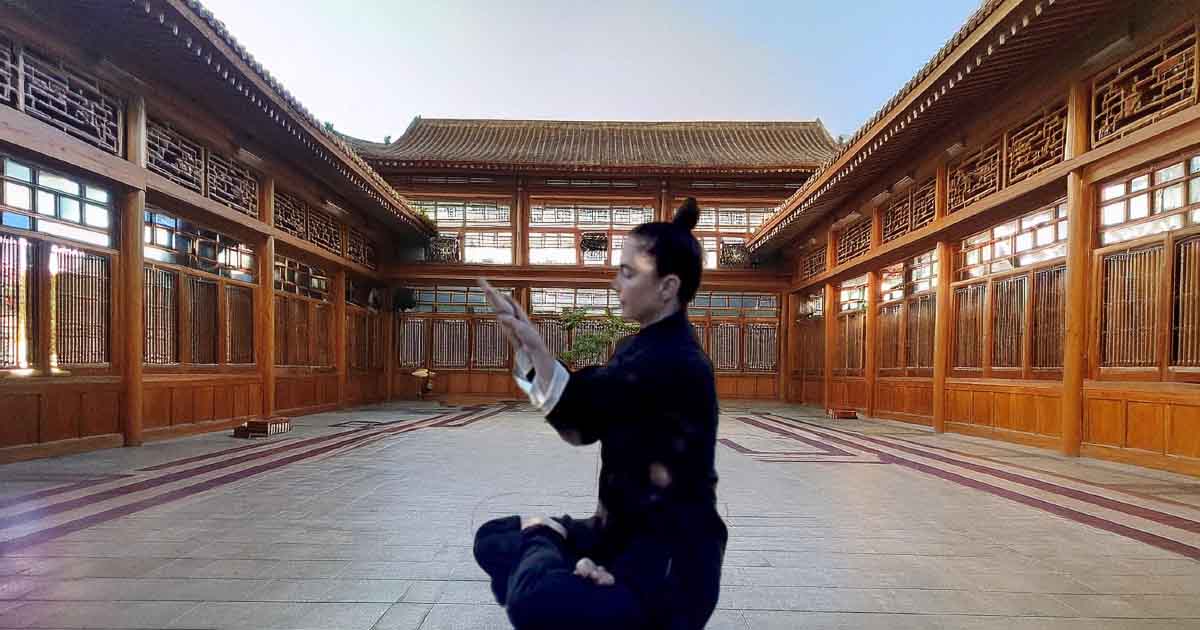Can You Learn Wing Chun Kung Fu Without a Training Partner?

Yes. The ancient Shaolin monks and warriors developed a unique and powerful approach to martial arts training that heavily relied on solitary practice and the power of visualization. This method, rooted in their Buddhist philosophy and monastic lifestyle, allowed them to hone their skills to extraordinary levels without the need for physical training partners.
Shaolin monks would spend countless hours in solitary practice, perfecting their techniques through repetition and intense focus. They understood that true mastery came from within, and that the mind was as crucial to their training as the body.
Through deep meditation and visualization, these monks could conjure imaginary opponents, allowing them to practice complex techniques and strategies without the need for a physical sparring partner. This has allowed practitioners today to become kung fu masters without the need for a class environment or training partner with ancient training methods brought into today's modern world.
While to Learn Wing Chun Online without a training partner may appear to presents challenges. The power of visualization in their training cannot be overstated. Shaolin warriors would enter a state of deep concentration, creating vivid mental images of opponents attacking from various angles. They would then respond to these imaginary attacks with precise movements, developing their reflexes and muscle memory. This method allowed them to practice not just physical techniques, but also to cultivate a heightened state of awareness and intuition.
By training alone, Shaolin monks were able to go deeper into their own minds and bodies, uncovering hidden potentials and pushing beyond perceived limitations. They believed that true strength came from self-knowledge and inner peace, rather than external competition. This solitary practice also allowed them to develop a profound connection between their physical movements and their spiritual cultivation, integrating their martial arts training with their Buddhist practice.
Over time, as martial arts spread beyond the monastery walls, training methods evolved. Modern martial arts classes often emphasize partner drills, sparring, and group exercises. While these methods have their merits in developing practical fighting skills and creating camaraderie, they may not cultivate the same depth of internal development that the ancient Shaolin training methods did. The shift towards partner-based training in modern martial arts classes has undoubtedly brought benefits.
It allows practitioners to test their skills against resisting opponents, develop timing and distance management, and learn to adapt to different fighting styles. However, this approach can sometimes lead to an over-reliance on external feedback and validation, potentially limiting the practitioner's ability to develop deep self-awareness and internal power. In contrast, the solitary training method of the Shaolin monks encouraged a level of self-reliance and introspection that is often lacking in modern martial arts training.

By practicing alone, these monks developed an unparalleled understanding of their own bodies and minds. They learned to generate power from within, to move with effortless efficiency, and to maintain unwavering focus in the face of imagined threats. It's important to emphasize that the Shaolin monks, through their solitary training methods, became some of the most formidable warriors in history.
Their ability to defeat opponents without ever having physically trained with them is a testament to the power of their mental training and visualization techniques. These monks could anticipate and counter attacks they had never physically experienced, simply through the power of their minds and the depth of their practice.
The Shaolin approach to training produced warriors who were not just physically capable, but mentally and spiritually evolved. Their combat skills were an extension of their spiritual practice, allowing them to remain calm and centered even in the midst of conflict.
This holistic development of body, mind, and spirit set them apart as truly exceptional martial artists. While modern martial arts training certainly has its place, there is much to be gained from incorporating the solitary training methods of the Shaolin monks. By dedicating time to solo practice, deep meditation, and visualization, today's martial artists can tap into the same wellspring of internal power and self-knowledge that made the Shaolin monks legendary.

Centered on solitary practice and visualization, produced warriors of unparalleled skill and mental fortitude were created during this time. Their methods demonstrate that the most powerful opponent we face is often ourselves, and that true mastery comes from within. By embracing these ancient techniques, modern martial artists can elevate their practice beyond mere physical technique, unlocking deeper levels of skill, awareness, and personal growth.
Solo drills play a vital role in developing Wing Chun skills at home. Exercises like "Switching Kwan Saos" help create muscle memory for deflecting an opponent's pressure and transitioning between defensive and offensive techniques. Other effective solo drills include practicing basic hand techniques like Tan Sao, Bong Sao, and Fook Sao, as well as footwork exercises to improve balance and mobility
Furthermore, learning Wing Chun Kung Fu without a training partner is indeed possible, thanks to the wealth of online resources and solo training techniques available today. While partner work is traditionally an important aspect of Wing Chun, dedicated practitioners can make significant progress through consistent solo practice and innovative training methods.
One of the most effective ways to learn Wing Chun without a partner is by focusing on foundational exercises and forms. The Siu Lim Tao, or "Little Idea Form," is crucial for beginners as it emphasizes fundamental principles such as relaxation, posture, and hand placement. By practicing this form daily, students can develop a strong understanding of Wing Chun's core concepts and improve their inner balance and energy flow.
To simulate partner training, practitioners can use various tools and techniques. Wall training is a popular method, where students practice techniques against a smooth wall to develop proper structure and forward energy. Additionally, visualization exercises can help students mentally rehearse techniques and scenarios, enhancing their understanding of Wing Chun principles.
Our online platform offers a comprehensive course that will guide you through the entire system. These resources often include detailed demonstrations, tutorials, and even certification options. By combining these online resources with dedicated solo practice and a focus on understanding the underlying principles of Wing Chun, practitioners can make significant progress in their martial arts journey from the comfort of their own homes.